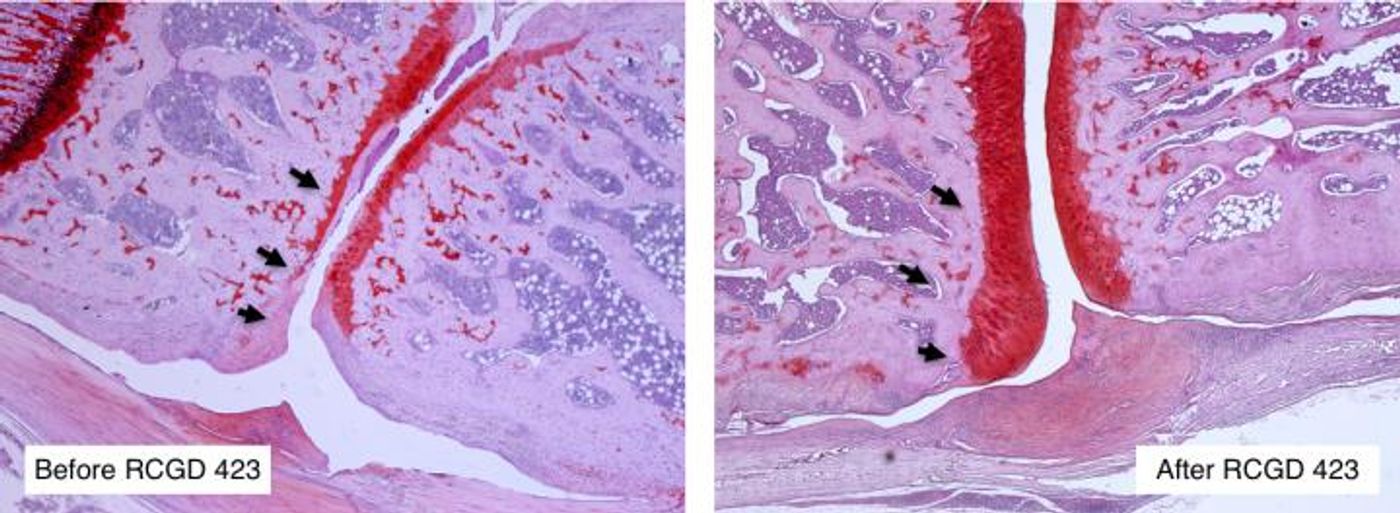New Molecule is a Potential Arthritis Therapeutic
There may come a time when people won’t require surgery to replace their joints. One researcher, Denis Evseenko, MD, Ph.D., a scientist at Keck School of Medicine at the University of Southern California, is pursuing that goal. His research team has been developing a therapeutic molecule they termed RCGD423, for Regulator of Cartilage Growth and Differentiation. It shows promise for treating arthritis.
The researchers applied RCGD423 to joint cartilage cells in the lab and found the cells grew more, while less of them died. Next, the molecule was injected into a rat research model; the damaged cartilage in those animals was able to heal more effectively.
RCGD423 acts through its communication with a specific chemical in the body, the glycoprotein 130 (Gp130) receptor. Two completely different kinds of signals are sent between these molecules; one stimulates the development of cartilage in the embryo, the other type of signal triggers chronic inflammation in adults. The RCGD423 molecule can amplify the ability of the Gp130 receptor to harness the signals that can stimulate the regeneration of cartilage in the embryo. RCGD423 can also stop inflammatory messages that can cause the breakdown of cartilage over time.
The positive results of their investigations have led the team to plan a clinical trial that will test RCGD423, or a molecule like it, as a treatment for either juvenile arthritis or osteoarthritis.
"The goal is to make an injectable therapy for an early to moderate level of arthritis," said Evseenko, associate professor of orthopedic surgery. "It's not going to cure arthritis, but it will delay the progression of arthritis to the damaging stages when patients need joint replacements, which account for a million surgeries a year in the U.S."
Evseenko suggested that RCGD423 could be a prototype for a new type of anti-inflammatory drug that has an extensive range of applications. Other work by this group produced several molecules that are similar to RCGD423 in structure but have varied potencies and physical effects.
In a different study reported in Nature Cell Biology, RCGD423 activated stem cells and was able to stimulate hair growth. The scientists are now partnering with researchers at USC and other institutions to investigate the many possibilities these molecules present as therapeutics for lupus, rheumatoid arthritis, jaw arthritis, neurological and heart diseases and baldness. It may also have implications for the maintenance of pluripotent stem cells in the lab.
Learn more about the Evseenko’s research from the video.
Sources: AAAS/Eurekalert! Via University of Southern California, Annals of Rheumatic Diseases









